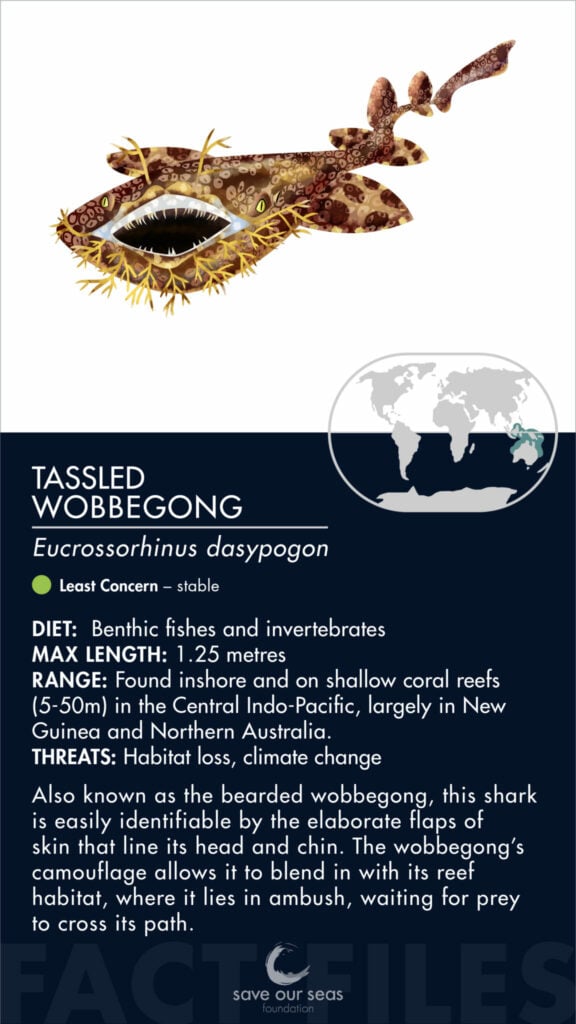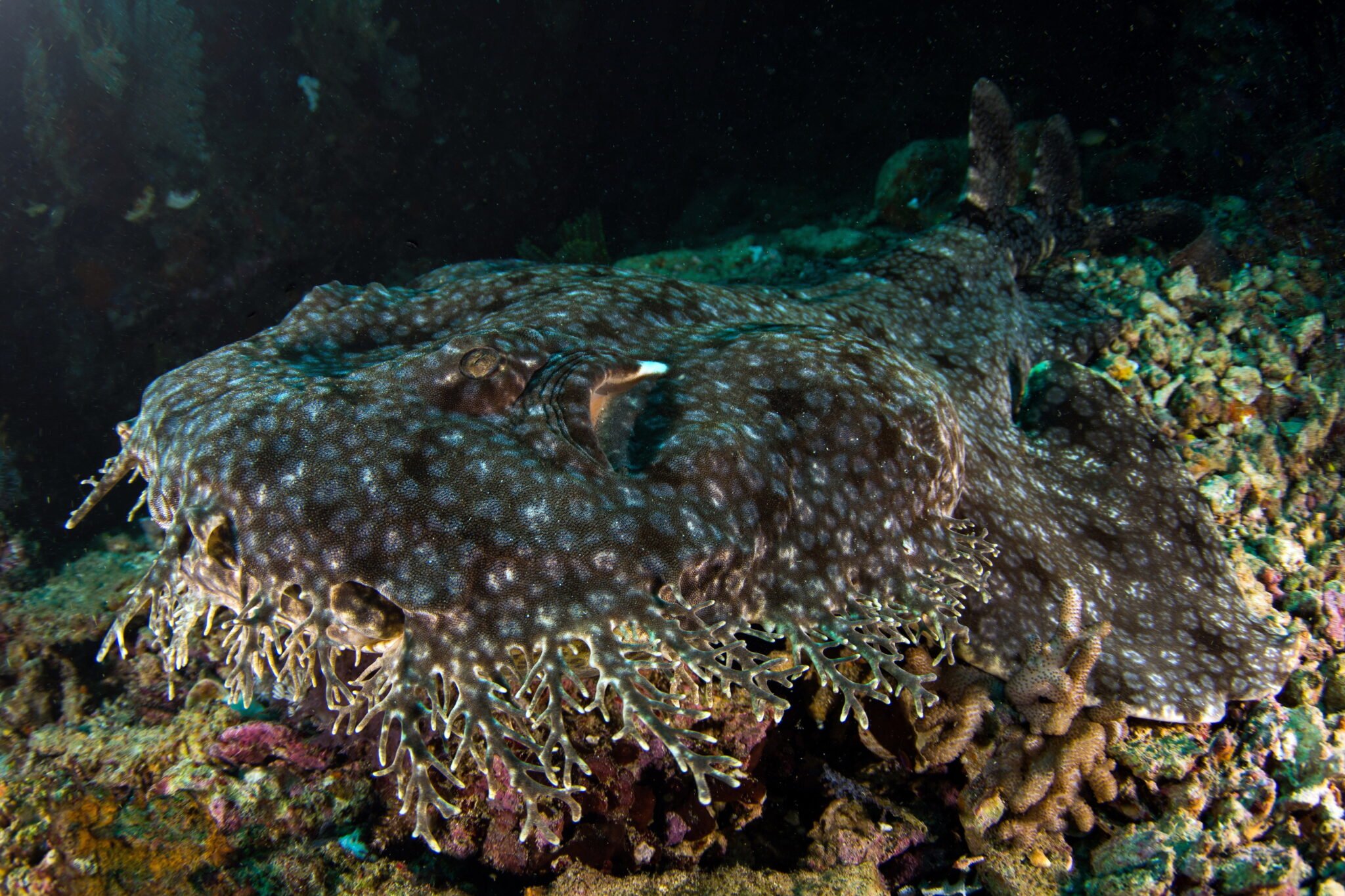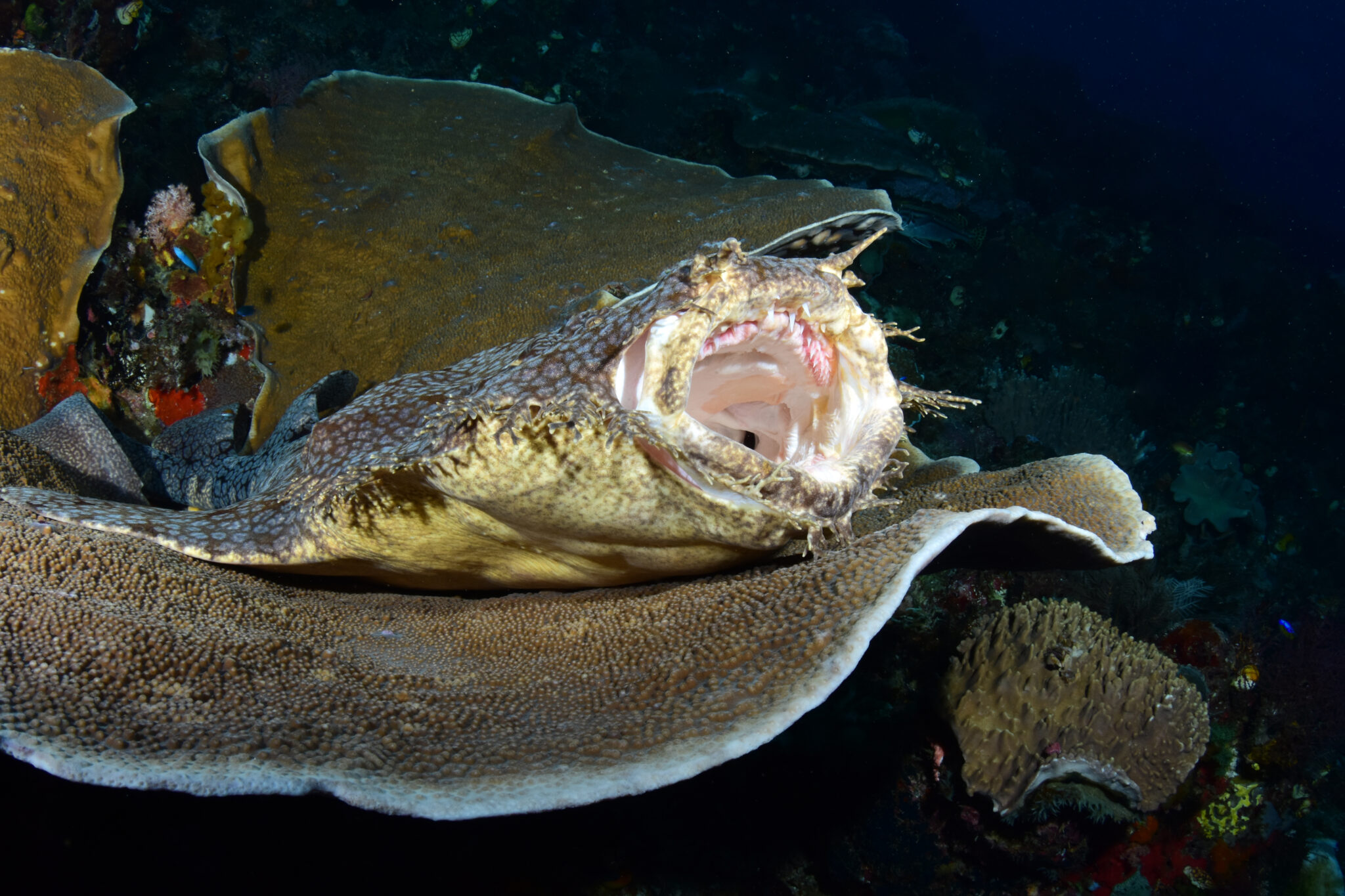Tasselled wobbegong
Eucrossorhinus dasypogon
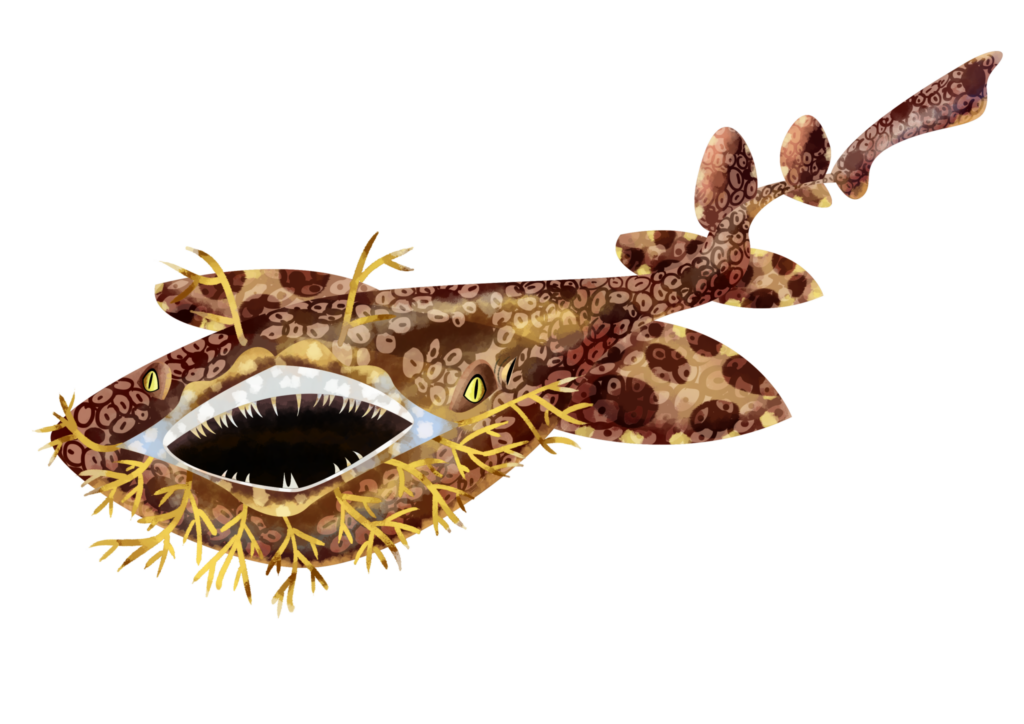

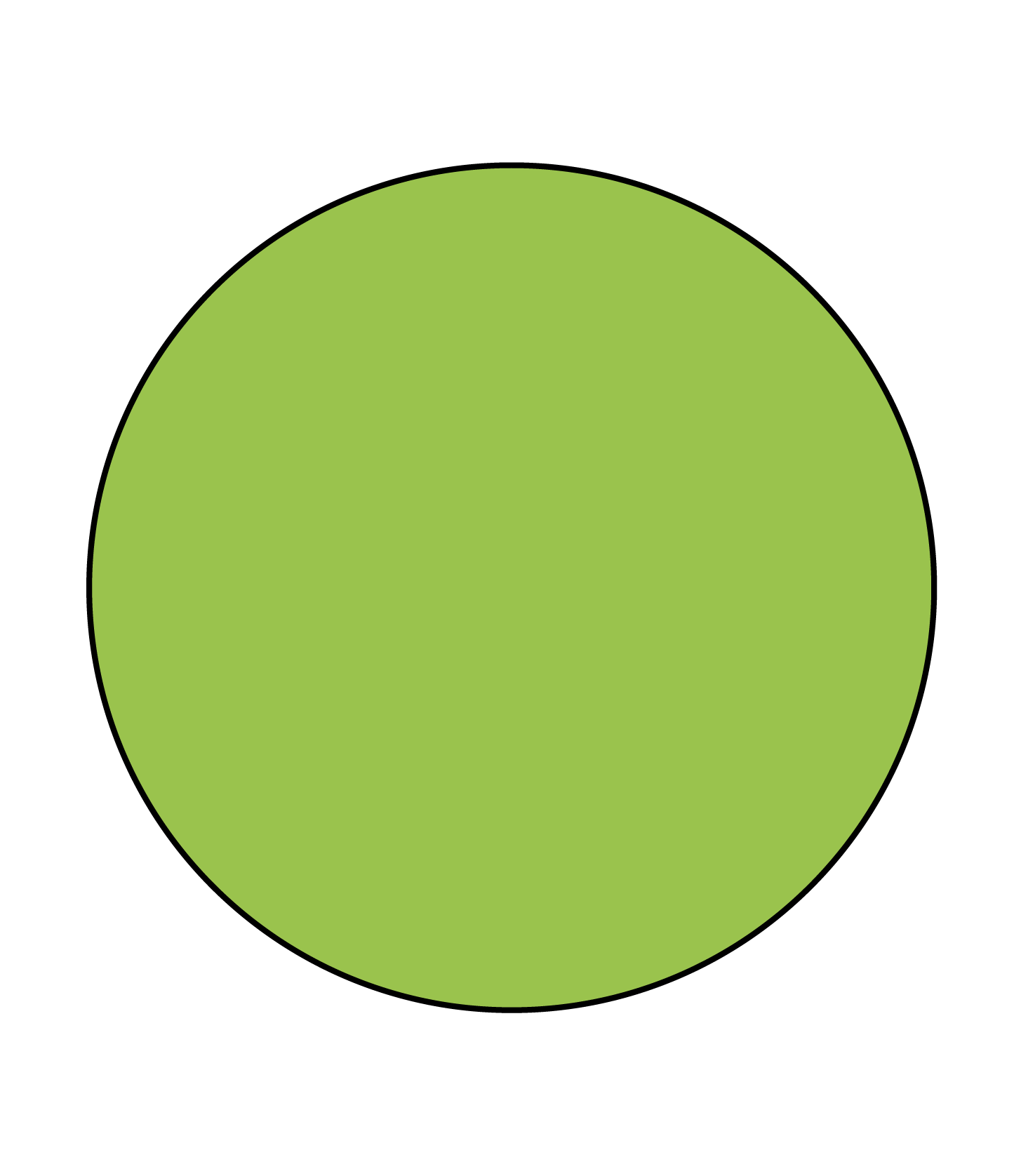
A member of the carpet shark family, this bottom-dwelling ambush predator hides on the seabed waiting for unsuspecting fish to cross its path. The tasselled wobbegong has a very distinctive ‘fringe’ of highly branched skin flaps (dermal lobes, or barbles) around the head and chin, which gives the appearance of a most unusual beard.
IDENTIFICATION
Broad, flat head with upward facing eyes. Many branched dermal lobes that line the side of the head and chin. Well camouflaged; narrow dark bands on a light background, with some darker blotches. ‘Mosaic-like’ pattern. Heavy jaws, with two rows of enlarged, sharp ‘fangs’ on the upper jaw and three on the lower jaw. Very large, paired fins and flattened body.

SPECIAL BEHAVIOUR
Tasselled wobbegongs are supreme ambush predators. They are well camouflaged against the reef, thanks to their highly patterned colouration and modified dermal flaps, and lie perfectly still on the seabed. Once prey gets close enough, tasselled wobbegongs open their mouths at lightning speed, causing pressure differences in the water and creating suction. The prey is sucked into the mouth and engulfed whole.
REPRODUCTION
Not much is known about the biology of tasselled wobbegongs. They are assumed to be viviparous (give birth to live young) based on the reproductive habits of similar species.
HABITAT AND GEOGRAPHICAL RANGE
Tasselled wobbegongs are found inshore on coral reefs in New Guinea and northern Australia, including the Ningaloo and Great Barrier Reef. They occur in shallow waters, between 5 and 50 metres. Previous reports of this species in Indonesia are thought to be erroneous (Last and Stevens, 2009). Individuals are commonly sighted on coral heads or in channels on the reef. They are thought to have small home ranges, and don’t stray far from their home reef.

DIET DESCRIPTION
Tasselled wobbegongs hunt on the seabed, feeding on benthic fish, invertebrates and very occasionally other sharks.
THREATS
Threats to tasselled wobbegongs are thought to be minimal, mainly because of their association with coral reefs (a substantial part of their range falls within the Great Barrier Reef Marine Park). They are caught as by-catch occasionally by fisheries, but are not a target species. Habitat loss is thought to be more of a threat, especially as climate change advances.
RELATIONSHIP WITH HUMANS
Tasselled wobbegongs are reported to bite divers, however this happens infrequently. Incidents usually occur when divers have accidentally strayed too close to a well-camouflaged wobbegong or when they have deliberately provoked one.
CONSERVATION
There are no species-specific measures for the tasselled wobbegong, but a large part of its range in Australia falls within the Great Barrier Reef Marine Park where the species benefits from protective measures including no-take zones. Fishing is not allowed in no-take zones, restricting the capture and retention of sharks and rays.
Fun Facts
Tasselled wobbegongs are nocturnal, and are only active at night. During the day they rest in caves and under ledges, with their tail curled up. However, tasselled wobbegongs never miss the opportunity for a snack – sometimes they’ll catch and eat the fish they share the cave with!
They catch a meal by lying in wait, hidden from view by their brilliant camouflage. If that doesn’t work, it uses its tail as a lure, waving it back and forth to attract prey.
They eat other sharks! A scientist conducting a survey of reef fish came across a tasselled wobbegong chowing down on a brown-banded bamboo shark, which is almost 80% of the wobbegong’s own size! It was a real case of ‘eyes bigger than your belly’ – 30 minutes later, the wobbegong had only managed to engulf the head.
The shark’s latin name – Eucrossorhinus dasypogon – roughly translates as ‘well-fringed nose with a shaggy head’.
The word wobbegong is thought to have originated from an Australian Aboriginal word meaning shaggy beard.
